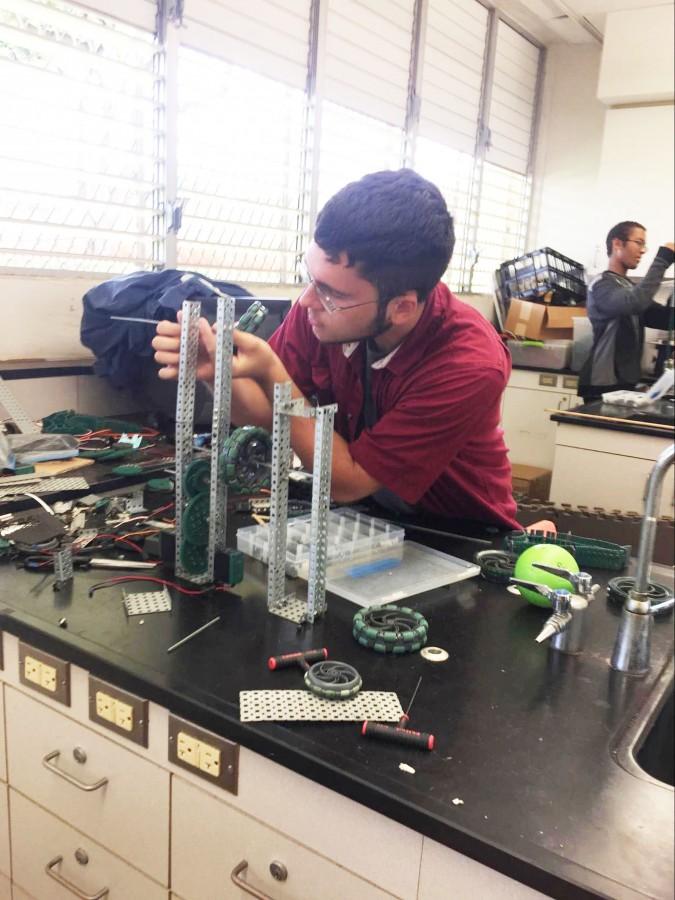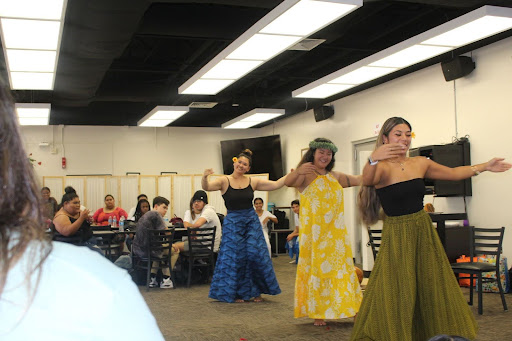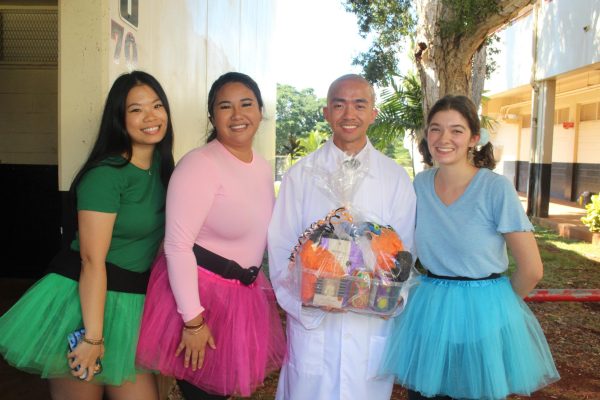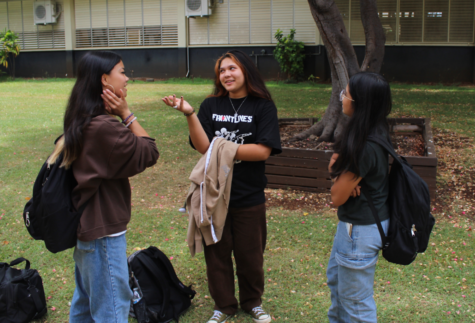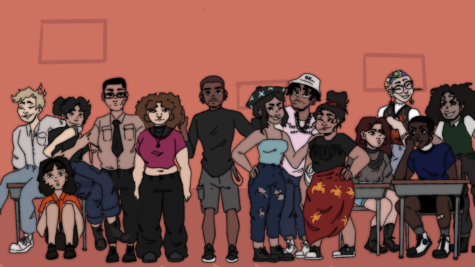STEM Builds Robots, Flies Drone
STEM Applications student Jacob Krieger (12) works on one of two robots the class built. The team recently competed in the VEX competition in August, where they designed their robot to pick up and launch a ball into a net on the other side of the field. “When you come in, you are expected to get onto your project and start building,” Krieger said.
October 1, 2015
People around the world are intrigued with technology and robots. With Radford’s STEM Applications classes, students in this program are delving into this reality.
Science, Technology, Engineering, and Mathematics Applications is a course that prepares students for STEM fields and occupations. According to the school registration guide, students focus on STEM projects, and complete study in technology literacy, design process, emerging technologies, computer aided design, sustainable design and technology, power and energy, and robotics.
Cristian Torres (11), a three-year student in the program, said, “The class is about coming in, thinking about the issue at hand, and solving the problem as fast, and as well as you can.”
Students participate in robotics and engineering competitions, and other types of critical thinking challenges.
“Every once in awhile, we have build challenges,” Torres said. “[Our teacher Ryan] Saito will give us a scenario with a problem. We have a time frame, which varies between one class period to a few days, where we have to examine the issue, build the necessary item, and test our theory. Then, we come together as a class and discuss our outcomes, allowing each of us to better understand what happened, look at where one person went wrong, while another succeeded. This provides each one of us necessary information to improve our ideas and designs.”
Students use what they learn in class and apply them in long-term projects. In one such project, Torres, who works on programming, said that the class designed their first robot.
“We spend a good month and a half on programming alone, and two weeks weeding out the bugs. We started the [first] robot last year, and coded through the summer, as well as build it,” Torres said. “We finished it two weeks after school started, and we took it to a practice competition.”
The team competed in the VEX competition in August. According to robotevents.com website, each year, an engineering challenge is presented in the form of a game. Students use the VEX Robotics Design System to build robots designed to score the most points possible in qualification matches, elimination matches and Skills Challenges.
Torres said that they designed their robot to pick up and launch a ball into a net on the other side of the field.
Makayla Billingsley (12), a second year student, was responsible for controlling the robot during the tournament. She admitted that she was “a little nervous, but extremely excited.”
The class completed work on the second robot and is preparing for their next tournament in November.
“We have plenty and plenty of competitions,” three year member Jacob Krieger (12) said.
The first robot competed in Maui where Saito accompanied one team, while a second team competed at the UH tournament.
“My team at UH was leading at the quarterfinals,” Torres said. “And then, Mr. Saito’s team reached the finals.”
In addition to competitions, Torres said that they have smaller scaled projects, such as “3D modeling competitions, animation, and video game challenges within the class.”
If that wasn’t enough, students in the program are also working with a drone and 3D printer.
“When we flew [the drone], it crashed and broke, so we decided to build new prop-guards. We’re using our 3D printer to construct prop-guards for keeping the drone’s propellers safe, because if they hit anything, they will snap easily,” Torres said.
While the class faces some frustrations when working with the drone, such as internet connection, they don’t let that stop them.
“We want to enter into an autonomous drone competition,” Torres said.

